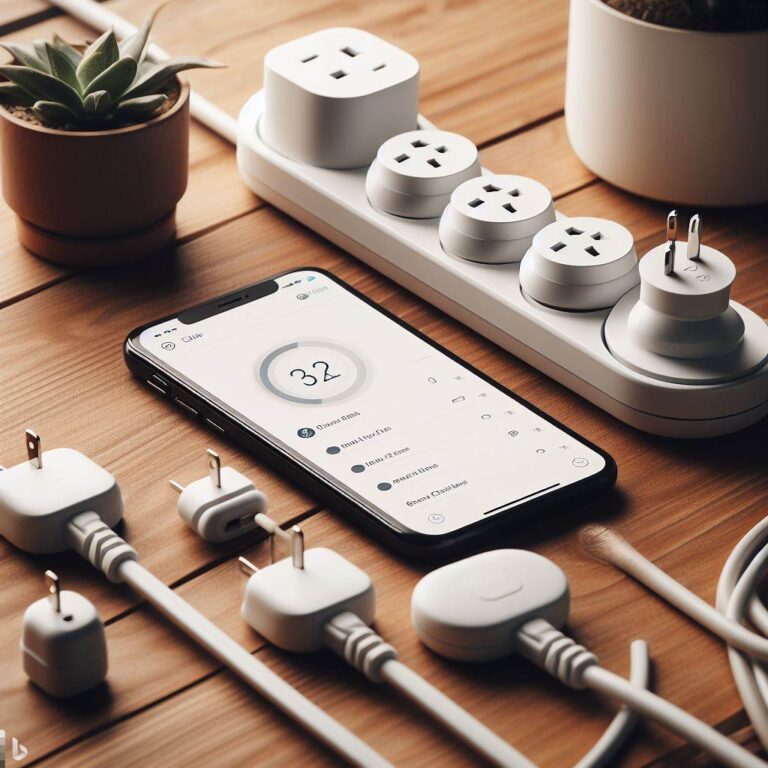How to select the best smartbulb at home
What is a Smart Bulb?
A smart bulb is a type of LED bulb that can connect to and be controlled by a smartphone, voice assistant, or other smart home devices. Unlike traditional bulbs, smart bulbs offer a range of smart features, such as color changing, dimming, and scheduling. With the ability to integrate into existing smart home ecosystems, smart bulbs can be seamlessly controlled and customized to fit different lighting needs. Whether you want to set the mood with vibrant colors, adjust the white light temperature to enhance productivity or relaxation, or even automate the lights to turn on and off when you’re away, smart bulbs provide a convenient and energy-efficient lighting solution for any home. In this guide, we will explore how you can select the best smart bulb to enhance your home lighting experience.
Benefits of Using Smart Bulbs
Smart bulbs offer a multitude of benefits that can enhance the lighting experience in your home. Here are some reasons why you should consider investing in smart bulbs:
1. Convenient and Customizable Lighting: Smart bulbs can be controlled remotely using voice commands or companion apps. This allows you to easily turn the lights on or off, adjust brightness levels, and even change the color temperature to create the perfect ambiance for any occasion. You can also create schedules or set timers, ensuring that your lights are always on when you need them.
2. Energy Efficiency and Cost Savings: Smart bulbs are designed to be energy-efficient, helping you save on electricity bills. With the ability to adjust brightness and color temperature settings, you can optimize lighting for energy conservation. Additionally, smart bulbs often use LED technology, which consumes significantly less energy compared to traditional incandescent bulbs.
3. Seamless Integration into Smart Home Ecosystems: Smart bulbs can be easily incorporated into existing smart home ecosystems. They can be connected to other smart devices, such as smart switches, motion sensors, or voice assistants like Amazon Alexa or Google Assistant. This seamless integration allows for synchronized and automated lighting experiences throughout your home.
In conclusion, smart bulbs offer the convenience of remote control, energy efficiency, and seamless integration with other smart devices. With customizable lighting options, you can create the perfect ambiance for any occasion while enjoying the benefits of advanced lighting technology.
Considerations Before Buying
Before purchasing a smart bulb for your home, there are several important considerations to keep in mind. First, determine what features are most important to you. Do you want a bulb that can change colors or one that simply provides white light? Consider whether you want a bulb that can be controlled through a voice assistant like Amazon Alexa or Google Assistant, or if you prefer to control it through a mobile app. Additionally, think about compatibility with other smart home devices you already have or plan to integrate in the future. It’s also important to consider the size and shape of the bulb, ensuring it will fit into your existing light fixtures. Finally, consider your budget and choose a bulb that offers the right balance of features and affordability. By carefully considering these factors, you can select the best smart bulb for your home that meets your specific needs and preferences.
Light Fixtures
Light fixtures play a crucial role in enhancing the ambiance and functionality of a space. With the advent of smart bulbs, these fixtures can now be transformed into customizable, versatile sources of light.
For overhead lighting, smart bulbs can be paired with traditional fixtures such as chandeliers, flush mount lights, and recessed lighting. By integrating smart bulbs, users can adjust the brightness and color temperature, creating the perfect lighting for any occasion.
Decorative lighting fixtures like pendant lights, wall sconces, or table lamps can also be enhanced with smart bulbs. Users can conveniently control the brightness and color of these fixtures, allowing for mood lighting that complements the overall style and theme of the room.
Outdoor lighting fixtures including pathway lights, garden lights, and floodlights can also benefit from smart bulbs. With remote control and scheduling features, users can easily automate outdoor lighting, ensuring a well-lit and secure environment while conserving energy.
By incorporating smart bulbs into different types of light fixtures, users can enjoy the convenience of adjusting lighting settings through voice control or companion apps. Whether it’s creating a cozy atmosphere for movie nights or illuminating outdoor spaces for added safety, smart bulbs provide a seamless and customizable lighting experience for any space.
Color Temperature and Brightness
Color temperature and brightness are key factors to consider when selecting a smart bulb for your home.
Color temperature refers to the appearance of light emitted by a bulb, ranging from warm to cool tones. It plays a crucial role in creating the ambiance and mood of a space. Warmer tones (2700K-3000K) emit a cozy and inviting light, perfect for living rooms and bedrooms. Cooler tones (5000K-6500K) mimic natural daylight and are well-suited for kitchens, bathrooms, and workspaces.
Brightness levels can be adjusted based on the desired activity in a room. Higher intensity levels are ideal for tasks that require attention to detail, such as reading or cooking. Lower intensity levels promote relaxation and are suitable for creating a calming atmosphere.
When selecting a smart bulb, look for options that offer a wide range of color temperature options to meet your specific needs. Additionally, consider the brightness levels and adjustability features offered by the smart bulb. This will allow you to fine-tune the lighting in different areas of your home, creating the perfect ambiance and enhancing the functionality of your space.
Cost and Energy Efficiency
When selecting a smart bulb for your home, it’s important to consider both cost and energy efficiency. Not only do energy-efficient bulbs help reduce electricity bills, but they also have a longer lifespan, saving you money on replacement costs in the long run.
LED bulbs are a popular choice for their energy efficiency. They consume significantly less energy compared to traditional incandescent bulbs, resulting in lower electricity bills. LED bulbs convert most of the energy they consume into light, minimizing wasted energy as heat. This not only makes them more environmentally friendly but also more cost-effective.
In addition to lower energy consumption, LED bulbs also have a longer lifespan. A typical LED bulb can last up to 25,000 hours, while incandescent bulbs only last around 1,000 hours. This means you’ll have to replace LED bulbs less frequently, further reducing costs.
When comparing the cost savings of using smart bulbs to traditional incandescent bulbs, the difference becomes even more evident. While smart bulbs may have a higher upfront cost, their energy efficiency and longer lifespan make them a more cost-effective choice over time.
To ensure cost and energy efficiency, look for smart bulbs that are labeled as LED and have a high energy star rating. These bulbs will not only save you money but also contribute to a greener and more sustainable home.
Connectivity Options
When it comes to selecting the best smart bulb for your home, connectivity options play a crucial role in determining its compatibility and functionality with your devices. There are three main connectivity options to consider: Wi-Fi, Bluetooth, and hub-based connectivity.
Wi-Fi-enabled smart bulbs connect directly to your home’s Wi-Fi network, allowing you to control them using a companion app on your smartphone or tablet. This provides convenience as you can easily manage and adjust your lighting settings from anywhere in your home. Wi-Fi connectivity also enables integration with voice assistants like Google Assistant, Amazon Alexa, or Apple HomeKit, giving you hands-free control over your smart bulbs.
Bluetooth-enabled smart bulbs, on the other hand, connect directly to your smartphone or tablet via Bluetooth. While this option may not offer the same range as Wi-Fi connectivity, it allows for a faster and more direct connection between your device and the smart bulb. Bluetooth connectivity is ideal for those who prefer to have control within the proximity of their devices, such as in a single room or area.
Lastly, hub-based connectivity involves the use of a central hub or bridge device that connects to your home’s Wi-Fi network and communicates with your smart bulbs. This setup allows for seamless integration with other smart home devices and can extend the range and functionality of your smart bulbs. Additionally, hub-based connectivity often supports multiple smart home ecosystems, providing you with a wider range of devices and functionalities to choose from.
Consider your specific needs and preferences when selecting a smart bulb connectivity option. If you want versatile control from anywhere in your home, opt for Wi-Fi-enabled bulbs. For direct control within a limited range, choose Bluetooth-enabled bulbs. If you have multiple smart home devices or want to explore a wider range of functionalities, hub-based connectivity may be the best choice for you.
White vs. Color Bulbs
When it comes to smart bulbs, one important decision to make is whether to go with white or color bulbs. White bulbs provide practical lighting for everyday tasks, while color bulbs offer a wide range of lighting effects and moods to enhance your space.
White bulbs are perfect for practical lighting purposes. They offer different shades of white, from warm to cool, allowing you to adjust the color temperature to suit your needs. Warm white is ideal for creating a cozy and relaxing ambiance, while cool white is great for tasks that require more focus and concentration, like reading or working.
Color bulbs, on the other hand, bring a whole new level of versatility and creativity to your lighting. With color bulbs, you can choose from a spectrum of vibrant colors to match your mood or complement your decor. Whether you want a soft and romantic atmosphere or a lively and energetic ambiance, color bulbs have got you covered. They also offer different lighting effects like dimming, color-changing, and even setting custom scenes to set the perfect mood for any occasion.
When choosing between white and color bulbs, consider your personal preferences and the desired ambiance for each room. If you need practical lighting for everyday tasks, white bulbs are the way to go. But if you want to add a touch of creativity and customize your lighting to create different moods, color bulbs are the perfect choice.
In conclusion, whether you choose white or color bulbs for your smart lighting setup, be sure to consider both practicality and personal preferences. By selecting the best option for your needs, you can elevate the ambiance of your space and enjoy the convenience and flexibility of smart lighting.
Voice Control Devices and Ecosystems
Voice control devices have become increasingly popular in homes, allowing users to control their smart devices, including smart bulbs, with simple voice commands. There are several voice control ecosystems available, each with its own set of compatible devices and capabilities.
One of the most well-known voice control ecosystems is Amazon Alexa. With Alexa, users can control their smart bulbs by simply saying commands like “Alexa, turn on the lights” or “Alexa, dim the lights.” Alexa is compatible with a wide range of smart bulbs, including popular brands like Philips Hue and Lifx.
Another popular voice control ecosystem is Google Home, which works seamlessly with Google Assistant. Using Google Home, users can control their smart bulbs by saying commands like “Hey Google, turn off the lights in the living room” or “Hey Google, set the bedroom lights to warm white.” Google Home is compatible with various smart bulb brands and supports a wide range of voice control functions.
Apple HomeKit is another voice control ecosystem that is compatible with a range of smart bulbs. By using voice commands through Siri, users can control and customize their smart bulbs, such as adjusting the color temperature or brightness. HomeKit supports multiple smart bulb brands, including Philips Hue and Lutron.
These voice control devices and ecosystems provide users with convenient and hands-free control over their smart bulbs. Whether it’s turning them on and off, adjusting the color and brightness, or creating custom lighting scenes, voice control adds an extra layer of convenience and simplicity to home lighting automation.
Motion Sensors
Motion sensors are a great addition to a smart bulb setup as they enhance the functionality by automatically controlling the lights based on movement in the area. With motion sensors, you no longer have to fumble in the dark for a light switch or worry about forgetting to turn off the lights when you leave a room.
The beauty of motion sensors lies in their automatic control. When they detect movement, they will turn the smart bulbs on, instantly lighting up the area. This can be especially convenient in areas like hallways, bathrooms, or closets where you may only need the light for a short period of time.
Using motion sensors with smart bulbs also promotes energy efficiency. By automatically turning off the lights when no movement is detected, you can save energy and reduce your electricity bill. This is particularly beneficial for areas that are frequently occupied but not always in use, such as the garage or basement.
Beyond convenience and energy efficiency, motion sensors also contribute to increased home security. When integrated with a smart home security system, motion sensors can trigger the lights to turn on and create the impression that someone is at home, deterring potential intruders.
In summary, motion sensors enhance the functionality of smart bulbs by providing automatic control based on movement. They offer convenience, energy efficiency, and increased home security, making them a valuable addition to any smart home setup.
Companion App Support
The importance of companion app support for smart bulbs cannot be overstated. A good companion app serves as the control center for your smart bulbs, providing a seamless and intuitive user experience.
Firstly, a companion app allows for remote control of your smart bulbs. Whether you are at home or away, you can easily turn your lights on or off, adjust brightness, and change colors with just a few taps on your smartphone. This provides convenience and flexibility, allowing you to create the ideal lighting ambiance even when you are not physically present in the room.
Additionally, a companion app enables scheduling of your smart bulbs. You can set specific times for your lights to turn on or off, ensuring that they are automatically adjusted based on your daily routine. This not only enhances convenience but also contributes to energy efficiency by avoiding unnecessary usage of electricity.
Furthermore, a good companion app should offer customization options. It should allow you to create personalized scenes, where you can save your preferred lighting settings and easily activate them with a single touch. This enables you to effortlessly switch between different lighting moods or create the perfect ambiance for various activities, such as watching a movie or hosting a dinner party.
In conclusion, a companion app is a crucial component of smart bulbs. It enhances the user experience by providing remote control, scheduling, and customization features, making your smart lighting system truly smart and convenient.
Popular Brands for Smart Bulbs
Introduction:
When it comes to selecting the best smart bulbs for your home, popular brands offer a wide range of options with advanced features and reliable performance. These brands have established themselves in the market by providing high-quality smart bulbs that not only offer convenience and flexibility but also integrate seamlessly with popular voice assistants and smart home platforms. Let’s take a closer look at some of the most popular brands for smart bulbs and what sets them apart.
1. Philips Hue:
Philips Hue is one of the most well-known and highly regarded brands for smart bulbs. They offer a wide selection of bulbs, including white and color options, with vibrant colors and customizable scenes. The Philips Hue system integrates with popular voice assistants like Amazon Alexa and Google Assistant and can be controlled via their companion app, providing a seamless and intuitive user experience.
2. LIFX:
LIFX is another popular brand that offers a range of smart bulbs, including color-changing bulbs and white lights. Their bulbs are known for their vibrant colors and easy setup process. LIFX bulbs can be controlled using voice commands via popular voice assistants and offer integration with smart home ecosystems like Google Home and Amazon Echo.
3. Sengled:
Sengled is known for providing affordable options for smart bulbs without compromising on quality. They offer a variety of bulbs, including multicolor bulbs and white bulbs with motion sensors. Sengled bulbs can be controlled through their companion app or via voice commands using popular voice assistants, making them suitable for both beginners and experienced smart home users.
In conclusion, when selecting smart bulbs for your home, considering popular brands like Philips Hue, LIFX, and Sengled can ensure a high-quality lighting experience with advanced features and compatibility with popular voice assistants and smart home platforms.
Philips Hue
Philips Hue is a leading brand when it comes to smart bulbs, known for its extensive range of features and benefits. These smart bulbs not only offer convenience and flexibility but also integrate seamlessly with popular voice control devices and smart home ecosystems.
The Philips Hue product line includes a wide selection of bulbs to suit every need. They offer options for both white and color bulbs, allowing users to personalize their lighting according to their mood or preference. With vibrant colors and customizable scenes, Philips Hue creates a dynamic and immersive lighting experience.
One of the standout features of Philips Hue is its compatibility with voice control. These smart bulbs can be easily controlled using popular voice assistants like Amazon Alexa and Google Home. With simple voice commands, users can adjust the brightness, change colors, or turn the lights on and off, all without lifting a finger.
Furthermore, Philips Hue supports a companion app that provides seamless and intuitive control over the lighting system. Through the app, users can create schedules, set timers, and even sync their lights with music or movies for an enhanced entertainment experience.
In addition to its wide selection and companion app support, Philips Hue also integrates with various smart home ecosystems, making it a versatile choice for homeowners. Whether you use Google Home, Amazon Echo, or other smart home devices, Philips Hue can easily fit into your existing setup.
Overall, Philips Hue stands out in the market for its exceptional features, compatibility, and ease of use. Offering a wide selection of bulbs, voice control capabilities, and support for multiple smart home ecosystems, Philips Hue is the top choice for individuals looking to elevate their lighting experience.
Amazon Alexa
Amazon Alexa is a powerful voice assistant that has revolutionized the way we interact with smart home devices, including smart bulbs. With Alexa, controlling and managing your smart bulbs is effortless, thanks to its advanced capabilities and seamless integration.
Using Amazon Alexa, you can easily control your smart bulbs through simple voice commands. Whether you want to adjust the brightness, change colors, or turn the lights on and off, Alexa responds promptly to your instructions, providing a convenient hands-free experience.
What makes Alexa even more impressive is its compatibility with a wide range of smart bulb brands and ecosystems. Whether you have Philips Hue, Lifx, or other popular smart bulb brands, Alexa seamlessly integrates with these systems, allowing you to have full control over your lighting setup.
Not only can you control individual bulbs, but you can also create groups or scenes to simultaneously control multiple bulbs with a single voice command. This gives you the freedom to customize your lighting to match your desired ambiance or mood.
In addition to controlling smart bulbs, Amazon Alexa can also interact with other smart home devices, such as thermostats, security systems, and entertainment systems, making it the central hub for your smart home ecosystem.
With Amazon Alexa and smart bulbs, you can enjoy the convenience of voice-controlled lighting and create a personalized and immersive lighting experience in your home.
Google Home
Google Home is another popular voice assistant that seamlessly integrates with various smart bulb brands, providing easy and convenient control over your lighting setup. With Google Home, you can effortlessly adjust the brightness, change colors, and turn your smart bulbs on and off using simple voice commands.
One of the key features of Google Home is its compatibility with a wide range of smart bulb brands and ecosystems. Whether you have Philips Hue, Lifx, or other popular smart bulb brands, Google Home enables smooth integration, allowing you to have full control over your lighting system.
Apart from basic controls, Google Home offers advanced functionalities to enhance your smart bulb experience. You can create custom scenes and schedules, enabling you to set the perfect ambiance for any occasion. Additionally, Google Home supports multi-room control, allowing you to control multiple smart bulbs in different areas of your home simultaneously with a single voice command.
Furthermore, Google Home can also interact with other smart home devices, such as thermostats, security systems, and entertainment systems, making it a versatile hub for your smart home ecosystem.
In summary, Google Home provides seamless integration and advanced functionalities for easy and efficient control over your smart bulbs, making it a top choice for creating a smart home lighting system.






